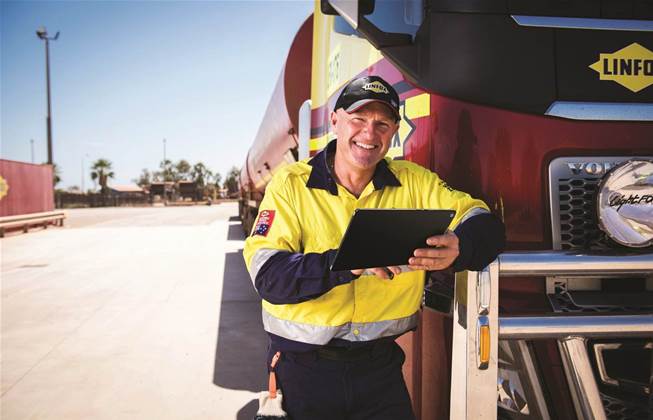Linfox is “working with Amazon Web Services” and others on a project that would allow the logistics company's drivers to predict whether they will meet or miss the timeframe for a scheduled delivery.

Speaking on a new Telstra internet of things podcast, Linfox chief information officer Conrad Harvey said the company is “working on a concept” that it is calling “Am I going to be late?”
“We’re working with Amazon [Web Services], amongst others, to say could we get to a point where we could almost say ‘hey Alexa am I going to be late?’,” Harvey said.
“Then it takes the information about the destination, takes traffic information from Google and other sources, and mashes that together to predict whether the truck’s going to arrive on time, and then gives the option for the control room to alert the customer, or to automatically alert the customer.”
Harvey did not say whether the company yet had a working prototype of the system.
But he said generally that the need for it was being driven by the “demanding supply chain universe in which we operate today”.
“To be able to give customers real time tracking, real time events, and real time … alerts is a significant part of what a supply chain company’s expected to do today and into the future,” he said.
Earlier this year, Linfox signed a deal with Telstra and (the now Telstra-owned) MTData to fit “an advanced telematics and management solution into its Australian truck fleet.”
This included Samsung tablets mounted into Linfox heavy vehicles so drivers could “access logbooks and complete safety checklists, and have capability, in some vehicles, for in-cabin recording of road safety incidents”, the company said in a statement at the time.
“The devices will enable us to coordinate our vehicles efficiently, reduce congestion on the roads and above all, ensure a higher level of safety for the community,” Harvey said.
Harvey indicated in the podcast today that the technology could soon be used to improve fatigue management, a big issue for the road transport industry.
“One of the important things that’s a passion in our company and is very important in our industry is making sure drivers are taking the necessary breaks when they can and when they need to,” Harvey said.
“We can set the [in-truck] device up to monitor that tightly, to make it very easy and clear to drivers when they need to take breaks.
“Over time we can evolve that further to the point that we can very accurately predict where the best place is to take a break in time for their next required break time.”
Updated 19/6/18: To clarify references to 'Amazon' relate to Amazon Web Services (AWS).



_(20).jpg&h=140&w=231&c=1&s=0)

.png&h=140&w=231&c=1&s=0)





 iTnews Executive Retreat - Security Leaders Edition
iTnews Executive Retreat - Security Leaders Edition










_(1).jpg&h=140&w=231&c=1&s=0)



